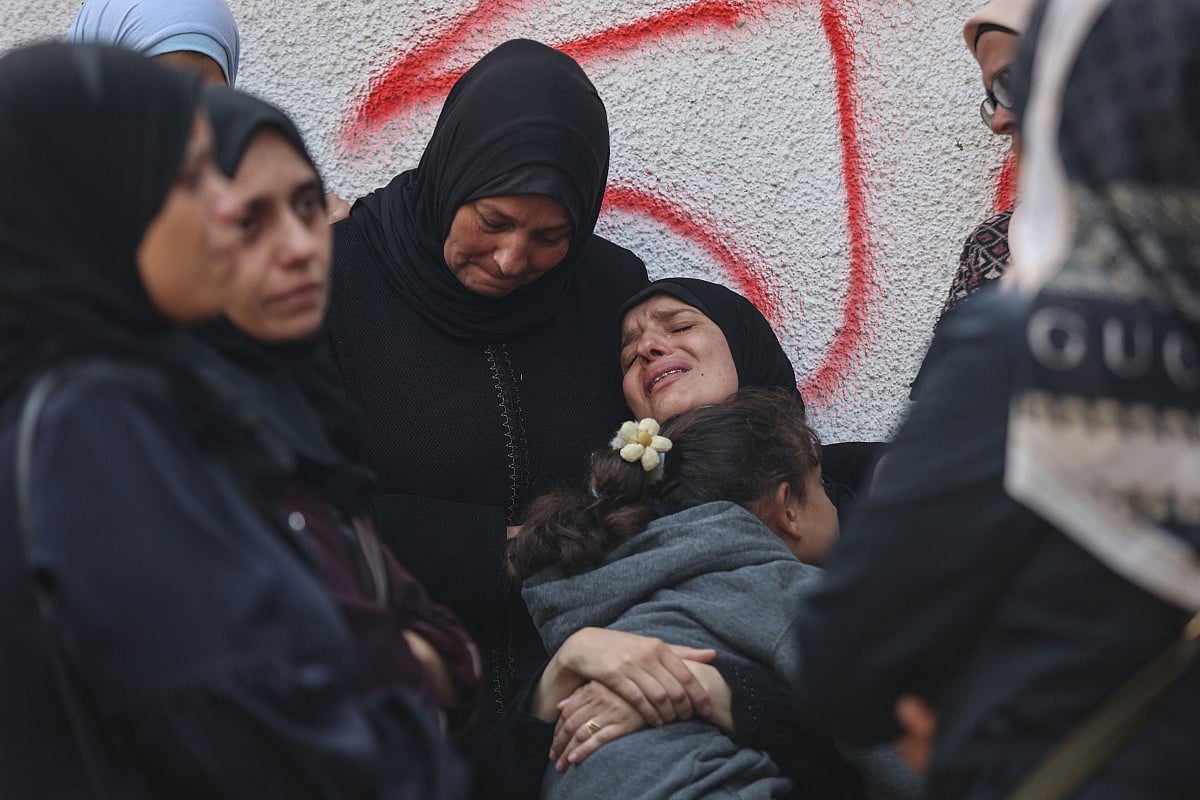35 children among 100 killed in Israeli strikes on Gaza
Ceasefire will hold, Israel should hit back if troops killed, Trump says

Dubai: Israeli airstrikes killed more than 100 people across Gaza on Wednesday in the deadliest escalation since the ceasefire was enacted on October 10, marking the most serious challenge yet to the fragile truce between Israel and Hamas.
Prime Minister Benjamin Netanyahu said he had ordered the military to carry out “powerful strikes” after accusing Hamas of violating the ceasefire. The militant group denied the charge and said it would delay handing over the body of another hostage in response.
The strikes came after an Israeli soldier was reportedly killed during an exchange of gunfire in Rafah, southern Gaza. US President Donald Trump, currently in Asia, defended Israel’s actions, saying the country was justified in retaliating.
“Israel should hit back when its troops come under attack,” he told reporters aboard Air Force One, while insisting that the ceasefire would hold because “Hamas is a very small part of the overall Middle East peace. And they have to behave. If not, they will be terminated.”
Mounting civilian deaths
Gaza’s civil defence agency said the Israeli strikes killed at least 101 people, including 35 children, within 12 hours. “At least 101 fatalities were brought to hospitals, including 35 children and a number of women and elderly,” said Mahmud Bassal, the agency’s spokesman. The figures were confirmed by hospital officials across Shifa, Aqsa, Nasser, and Al Awda hospitals.
Mohammed Abu Selmia, director of Shifa Hospital, said 45 wounded victims — among them 20 children — were in critical condition. “The toll is likely to rise,” he warned.
Aqsa Hospital in Deir Al Balah reported at least 10 deaths, including six children. In southern Gaza, Nasser Hospital received 20 bodies, among them 13 children, while Al Awda Hospital recorded 30 bodies, including 14 children.
Israel’s justification and Hamas’ response
Israeli officials said the strikes targeted “30 terrorists holding command positions” within Hamas and other armed groups. The military said it would “continue to uphold the ceasefire agreement but respond firmly to any violation.”
Netanyahu’s order followed reports that Hamas had returned partial remains of a hostage earlier in the week — an act Israel described as a “clear violation” of the ceasefire deal. An Israeli military official confirmed that Master Sgt. Yona Efraim Feldbaum, 37, was killed by “enemy fire” in Rafah on Tuesday.
Hamas denied involvement in the Rafah shooting and accused Israel of breaching the truce instead. “The violent strikes carried out by Israel across the strip are a blatant violation of the ceasefire deal,” the group said, calling on mediators to pressure Israel to stop.
Hospitals overwhelmed
Ambulances and small trucks carrying bodies crowded hospital entrances through the night. In Deir Al Balah, one man was seen carrying a child’s body into the hospital. “They struck right next to us… we saw the rubble on top of our young ones,” a woman at the scene said.
At dawn, displaced Palestinians cleared debris from destroyed tents. “What kind of ceasefire is this?” asked survivor Amna Qrinawi, standing beside a crater left by the strike.
Israel informed Washington before launching the strikes, according to US officials. Despite the mounting toll, both sides insist the ceasefire technically remains in place — but analysts warn that the latest escalation could unravel what little stability the truce still holds.
-- With AFP & AP inputs
Sign up for the Daily Briefing
Get the latest news and updates straight to your inbox
Network Links
GN StoreDownload our app
© Al Nisr Publishing LLC 2025. All rights reserved.
